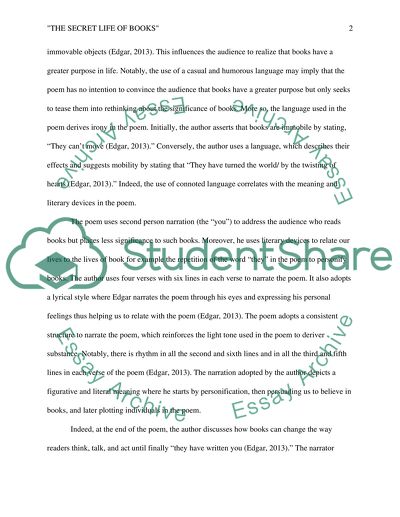Cite this document
(“Analysis of the poem The secret Life of Books by Stephen Edgar Essay”, n.d.)
Retrieved from https://studentshare.org/literature/1490880-analysis-of-the-poem-the-secret-life-of-books-by-stephen-edgar
Retrieved from https://studentshare.org/literature/1490880-analysis-of-the-poem-the-secret-life-of-books-by-stephen-edgar
(Analysis of the Poem The Secret Life of Books by Stephen Edgar Essay)
https://studentshare.org/literature/1490880-analysis-of-the-poem-the-secret-life-of-books-by-stephen-edgar.
https://studentshare.org/literature/1490880-analysis-of-the-poem-the-secret-life-of-books-by-stephen-edgar.
“Analysis of the Poem The Secret Life of Books by Stephen Edgar Essay”, n.d. https://studentshare.org/literature/1490880-analysis-of-the-poem-the-secret-life-of-books-by-stephen-edgar.


